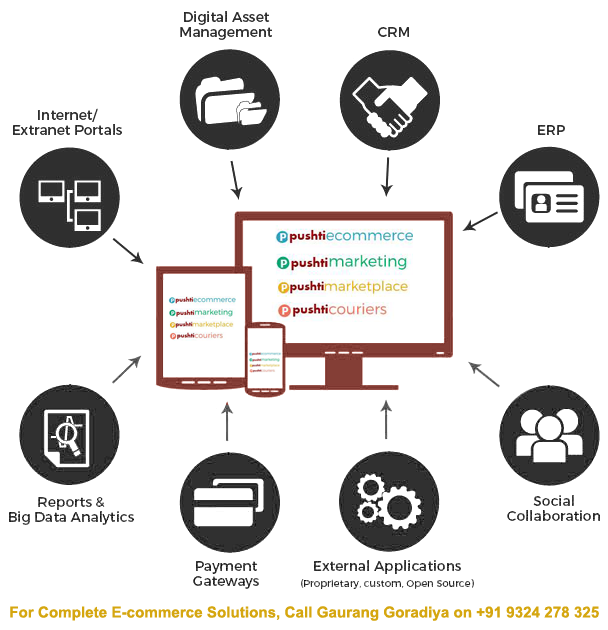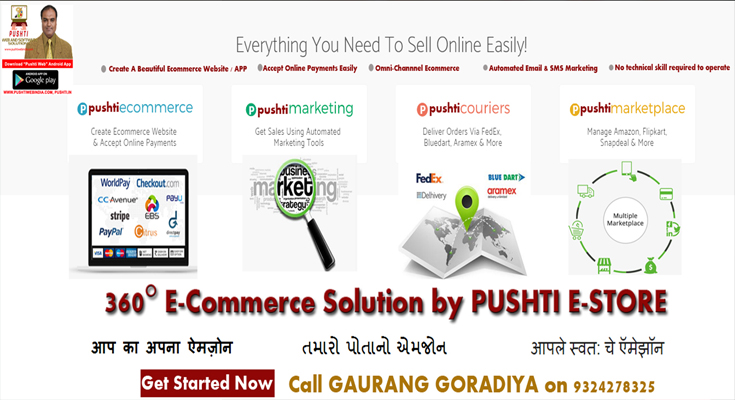No one can see into the future, and yet by closely observing and analyzing the technological advancements affecting the retail industry, Pushti has come up with an informed set of predictions as to what the next 10 years of e-commerce will bring-some of which will genuinely surprise you, all of which you will want to prepare for in order to stay ahead of the curve.
1) Personalisation for E-Commerce
Personalised e-commerce experiences are now becoming more frequent, and many customers are now coming to expect some form of personalisation. Now that Alexa and allows you to ask questions and get immediate feedback, AI will help more ways for ecommerce brands to reach shoppers with targeted messages.
Over a third of millennials said the ability to search merchandise in an online or physical store using an image, and receiving recommendations, would be helpful.
For instance, millennials are far more likely to appreciate personalisation or automation. Retailers who use AI or automation of some form to reach desired shoppers with smart marketing messaging are more likely to succeed with particular audiences.
As we come into the Christmas period, more brands will be making the most of these ecommerce trends and technologies in 2018.
A connected shopping experience is becoming less of a “nice-to-have” feature, but is rather expected by the modern shopper. Whether it’s as simple as click-and-collect, or an AI chatbot helping to answer product queries, ecommerce is developing rapidly, and brands have to adapt to stay competitive online.

2) Messenger app ecommerce
One-to-one communication is also on the rise. More businesses are sending information, content or offers via WhatsApp, Facebook Messenger, or other apps.
Similarly to email, it gives you the unique opportunity to get your message in front of a customer. But while emails will often get clicked quickly, or a quick glance at a subject line, messages that come through messenger apps are often treated with more regard.
A customer who signs up for such a service will most likely be more engaged with your brand. In addition, fewer brands will be messaging them in this way, so it is more of a unique moment in time.
While many e-commerce stores use on-site live chats, messenger apps such as Facebook Messenger or Twitter’s apps are already important customer service tools. If you aren’t already monitoring these, or have a way to deal with queries in these ways, then consider your strategy going forwards.
3) Marketplaces vs. direct websites, which business model is the future of ecommerce?
There are benefits and drawbacks for both online marketplaces and direct websites. While direct websites compete by offering customers a unique experience with emphasis on customer relationships, marketplaces allow customers to compare prices quickly and easily.
Marketplaces are continuing to grow and become more popular amongst customers who want to get what they consider to be the best deal.
We believe that online marketplaces will continue their growth to become market leaders, since they provide so many benefits to both customers and retailers in ecommerce.
We believe that online marketplaces will continue their growth to become market leaders, since they provide so many benefits to both customers and retailers in ecommerce.
4) Is the future of ecommerce mobile?
Mobile traffic is on the rise and more and more customers are using apps, mobiles, and tablets to access digital content as opposed to desktops. However, it seems that customers still prefer to actually purchase on desktops and tablets, whilst a small percentage actually purchase on mobiles.
We believe that mobile ecommerce will continue to grow, and the development of new technology will make it easier for customers to shop on their mobile phones. This will allow mobile revenue will rise to a figure more proportionate to mobile traffic.
5) Product visualization will become a crucial ecommerce trend as more and more complicated products are sold online
The first products that were sold online were books and that was no coincidence. Books, in terms of product are very simple. Everybody knows how they look or “work”. There is no need for visualization or experiencing the product. The focus is on the content of the books and this can be very well described in plain text. However, one major ecommerce trend for the past 10 years was new product categories coming online. First consumer electronics, then toys and fashion, now furniture and even machinery for businesses. All of them have one thing in common. They are more complicated and depend more on explanation and visualization than the categories that went online before. Ecommerce players in those new categories need to come up with solutions that replace the offline retail experience where you can talk to the shop owner and ask for explanation or touch and try out products.
Since more and more complicated products are sold online new technologies for visualization will spread in e-commerce. For the near future product videos will be the first approach that gains mass adoption.
www.pushtiwebindia.com
www.pushti.in
www.incabrescia.com
www.seospecialistmumbai.com




It was great article about Ecommerce Trends 2018,
Round And Bold is an e-commerce website offering Bangle and Bracelets, Imitation Jewellery.